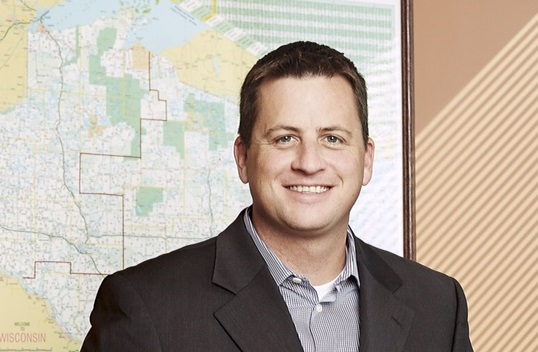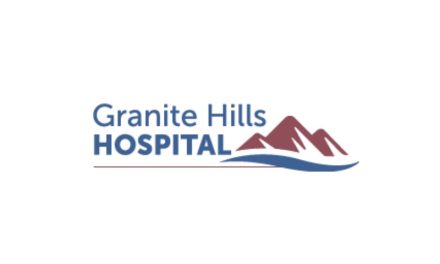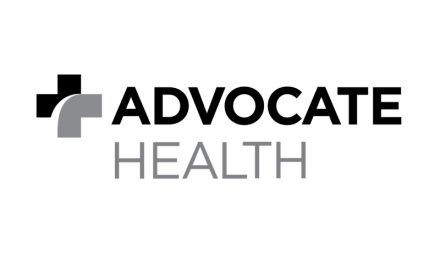
UnitedHealthcare of Wisconsin sees increase in telehealth

UnitedHealthcare of Wisconsin CEO Dustin Hinton said in Wisconsin and Michigan, the two states he oversees, the insurer’s telehealth numbers have increased 21-fold since mid-March as providers respond to COVID-19.
“I think that we’ll look back on this as the starting point, in mid-March, when telemedicine and behavioral telehealth changed dramatically,” Hinton told Wisconsin Health News on Thursday.
Hinton talked about the pandemic’s effects on the company. Edited excerpts are below.
WHN: UnitedHealth Group recently reported that they’ve seen “minimal impact” on its first quarter financials from the spread of the new coronavirus. Has UnitedHealthcare of Wisconsin seen similar impacts?
DH: I would say it’s still early. There’s a bit of a lag when it comes to some of these things, but we’re seeing certainly a decrease in claims coming through since probably the mid-March timeframe. And I think the hospital systems in Wisconsin have been advertising their revenues are down around 40 percent. That’s starting to surface in our claims experience.
I would say as a fact point that about 80 percent of our commercial business in Wisconsin is self-funded. So our employers are probably starting to see the same in their claim activity.
WHN: Are you expecting a drop in commercial enrollment?
DH: We do. I think that we’ve all read the articles where there’s been job loss reported already. We have friends and family that we know have lost their jobs. So I do think that we’re going to experience a decrease in our enrollment. To what extent we’re going to be impacted, it’s hard to say.
We see a lot of advertisement of furloughed employees. A lot of furloughed employees retain their benefits. So we’re looking at that. People who lose their coverage still have the opportunity to take COBRA for an extended period of time. So we don’t know how many folks will take COBRA.
There’s also hope that when the economy surges back, that some will be rehired, if not all will be rehired. We hope that this is a short-term experience. But suffice it to say, that our forecasting meetings have been very interesting because there’s a lot of moving targets. But we certainly have started to see an impact in our enrollment.
WHN: Are you considering a return to the individual market?
DH: In our earnings announcement, one of our senior leaders did make the comment that we are evaluating it. And I would just confirm that we are making the evaluation market by market. We’ll have a more clear view of our position on the individual exchange probably next quarter. Those announcements might be saved until that earnings release. But I would just confirm that we are looking at it market by market.
WHN: Are you considering cutting premiums for employers or other actions to help businesses affected by the safer-at-home order?
DH: I would say there’s a lot of activity now with our billing department and our employer groups. There are a fair amount of employers that have asked for extended grace periods. We are trying to be as flexible as possible in those situations. So we have delayed a fair amount actually of premium collection and allowed for some grace periods.
This is going to be tough. While there is certainly currently looking like a decrease in claims, we’re also anticipating a surge in claims because there are a lot of procedures, surgeries that have been put on pause. So while there’s currently a dip in claims, there’s going to be a surge. And at the end of the day, at the end of the year, with the Affordable Care Act, there’s going to be a back-stop of our medical-loss ratio. What that means, if we do collect too much premium versus claims, we’ll be in a rebate position and we’ll return funds to employers.
WHN: When might that surge from referrals come?
DH: We’ve started to see scheduling of some procedures right now. And listening to some of the hospital executives, they are working hard on trying to create safe forums for that to occur. Even speaking to family and friends, I know that some folks who need surgeries are starting to get surgery dates.
So I anticipate in the summertime that we’ll start to begin to see the increase in claims. And certainly into third quarter, we anticipate that to really ramp up. And then also in the summertime, I would expect, hopefully as we’re all returning to work, there’ll be an increase in testing that will happen. So that would be an additional surge that I would expect to take place in the summertime.
WHN: What has UnitedHealthcare done to address cost-sharing for COVID-19 tests and treatment?
DH: What we’ve really tried to do is to just simplify the entire process. We have waived member cost-sharing for testing as a lot of insurance companies have done. And then we’ve also waived treatment costs as well, which is substantial.
In addition to that, we’ve provided a symptom tracker on our website and then a list of testing locations. We really are just trying to make it as simple as possible for a member to go get tested if they believe it’s necessary and then not have to worry about the hassles of the costs of COVID-19. So we’ve eliminated that.
WHN: What else are you doing for patients?
DH: Early on, we did allow for early prescription drug refills, so people could feel more comfortable about that, especially as they thought about the safer-at-home guidelines, that they wanted to make sure they had their prescriptions in place and could safely hunker down. So we did allow for those early prescription fills. Other things, we allowed for a special open enrollment period for members who might have opted out of coverage for various reasons and were not anticipating a pandemic, not that any of us were. So we increased our flexibility there.
Maybe the biggest thing that we’ve done is we’ve opened up telehealth to local providers. We’ve always had virtual visit capabilities from three national providers. But now people want to see their local doctors, and the physicians want to be able to see their patients. So we’ve opened up that both on the medical side and the behavioral side. And I would say that has been highly successful. And I think that’s one of those things that will be here to stay. As people are getting used to Zoom and Webex, people are also starting to get used to telehealth and telemental visits, so that’s been widely popular.
WHN: What has UnitedHealthcare done to help providers?
DH: Earlier this month, we announced nearly $2 billion in accelerated claim payments to assist our providers with current cash-flow issues. I know from calls that I received from local providers that they were hoping that this would occur and we were locally and nationally really excited to deliver on that so that we could help with the immediate cash-flow concerns. I think that was substantial.
I mentioned telehealth. We’ve expanded that capability. I heard from some of our senior executives recently as a Webex this morning where they had single to double digit physicians that were doing telehealth, they have 900 to 1,000 in their systems doing telehealth. So creating the flexibility for them to see their patients versus a physician-office visit, I think has been really important. We have suspended some of our prior authorization requirements to lessen some of the administrative burden on some of the systems that just really want to focus on COVID-19 patients. So I think that’s been well received from the providers.
And lastly, our Optum organization, from our parent company UnitedHealth Group, was involved with the delivery and disbursement of $30 billion worth of CARES Act money that the (Department of Health and Human Services) had earmarked for the provider community. So we’ve actually been one of the organizations in helping distribute the money to providers.
WHN: Are there other long-term changes you see caused by the pandemic?
DH: Telehealth for sure. I think that we’ve been talking about it for some time as an organization as have others in the healthcare industry, but I think more attention will be focused on the social determinants of health, with the disproportionate amount of cases in urban areas that have some struggles that maybe others do not. So I think that there’s going to be a spotlight on social determinants. Why have some folks been impacted and others not been impacted to the degree? So I think that long term hopefully will improve for some.
I think that you’ll see continued shifting of care outside of the hospital walls to alternative sites of care. I think everybody was really concerned, and still has concern, about maximum capacity in the traditional hospital walls. I think you’ll continue to see those shifts occur, and telehealth certainly is part of that.
There could also be more mergers in the industry, whether it’s insurance companies or healthcare providers. This is taking its toll on a lot. So I think it’s a lot of revenue issues. And whether that’s individual groups or rural physicians, I think that there’ll probably be more M&A activity after some of this subsides.
Wisconsin Health News is removing the password on all stories related to the coronavirus. For the latest developments follow us on Twitter at @wihealthnews or check out our website. For complete healthcare coverage, sign up for a free trial to our daily email newsletter.





